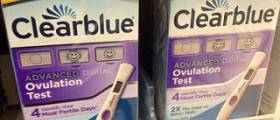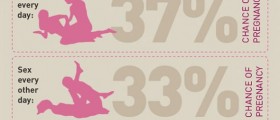
Ovulation calendars are designed to help women who want to get pregnant work out when they are most likely to experience ovulation. An ovulation calendar works with the data the user inputs, to come up with a prediction. This mathematical calculation can involve two parts the date of the last menstrual period and the average cycle length. For a more accurate calculation, an ovulation calendar can also work with three parts the date of the last menstrual period, the average length of the cycle, and the average length of the luteal phase. The luteal phase is the time between ovulation and the next expected period, in other words the second half of the cycle. This part of your monthly cycle can give you an awful lot of info about when you will be fertile, but it obviously requires you to know for sure. So, what's the real value of ovulation calendars?
Many online ovulation calendars start off with the cycle length that's perceived to be average 28 days. A study of over 30,000 menstrual cycles from more than 2,000 women shows that the mean cycle length is actually 29.1 days. Users should keep track of their cycle length themselves, so they can tell the ovulation calendar the right information. Once you have input the date of your last menstrual period and your average cycle length, you're already able to get some data. Generally, ovulation occurs around 14 days before menstruation takes place. Obviously, there will be some variation there. It's also good to keep in mind that sperm sticks around in the female reproductive system for around five days, so women will benefit from an ovulation calendar even when the day was off a little.
You can get the most of an ovulation calendar if you also use an ovulation test the day the calendar says you will be ovulating, as well as the two days before or after (of course, you stop when you get a positive.). If the ovulation calendar was right, don't alter your date. If it was wrong, change the length of your luteal phase to reflect your cycle. All in all, an ovulation calendar is a hassle-free tool that won't cost you anything and will increase your chance of getting pregnant.














Your thoughts on this
Loading...